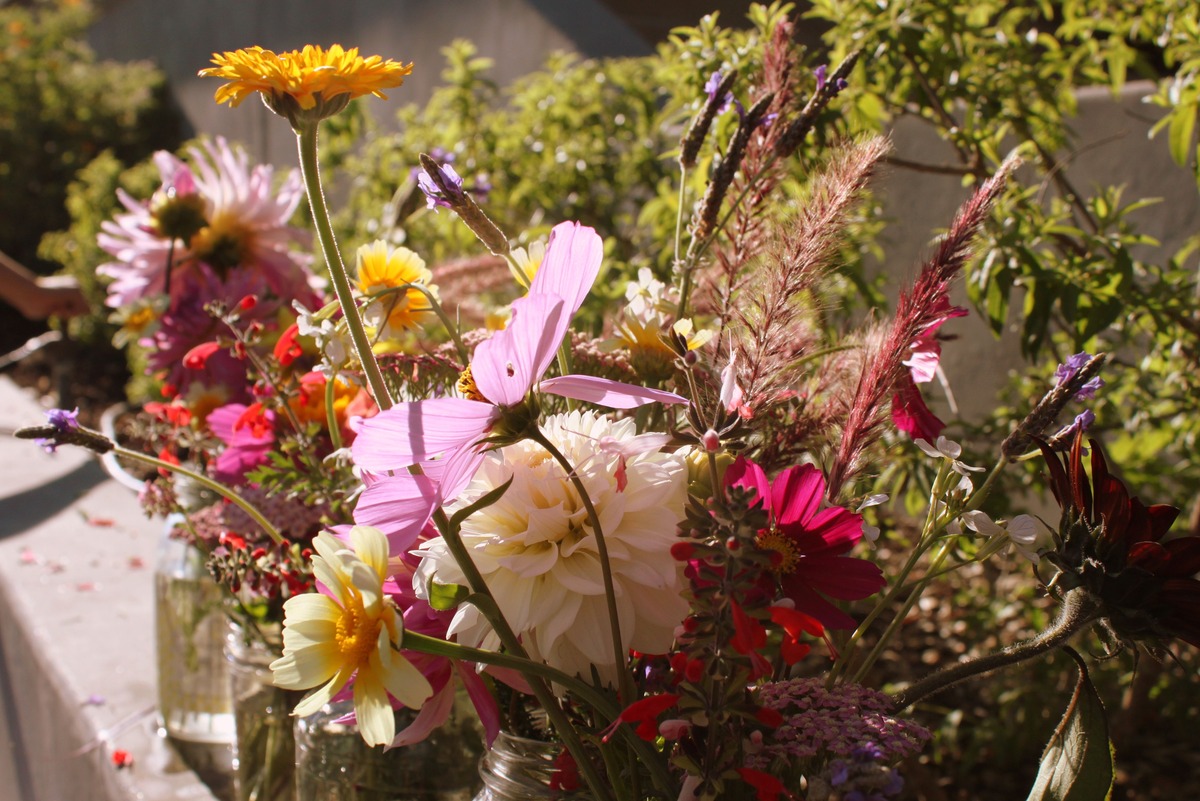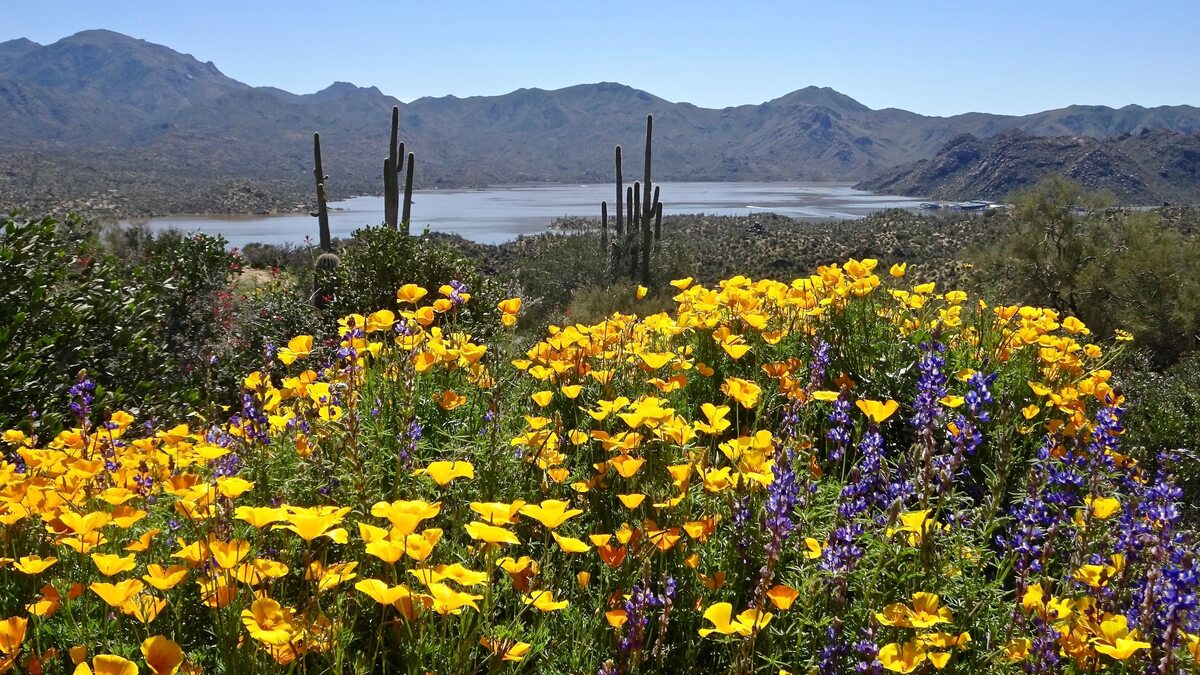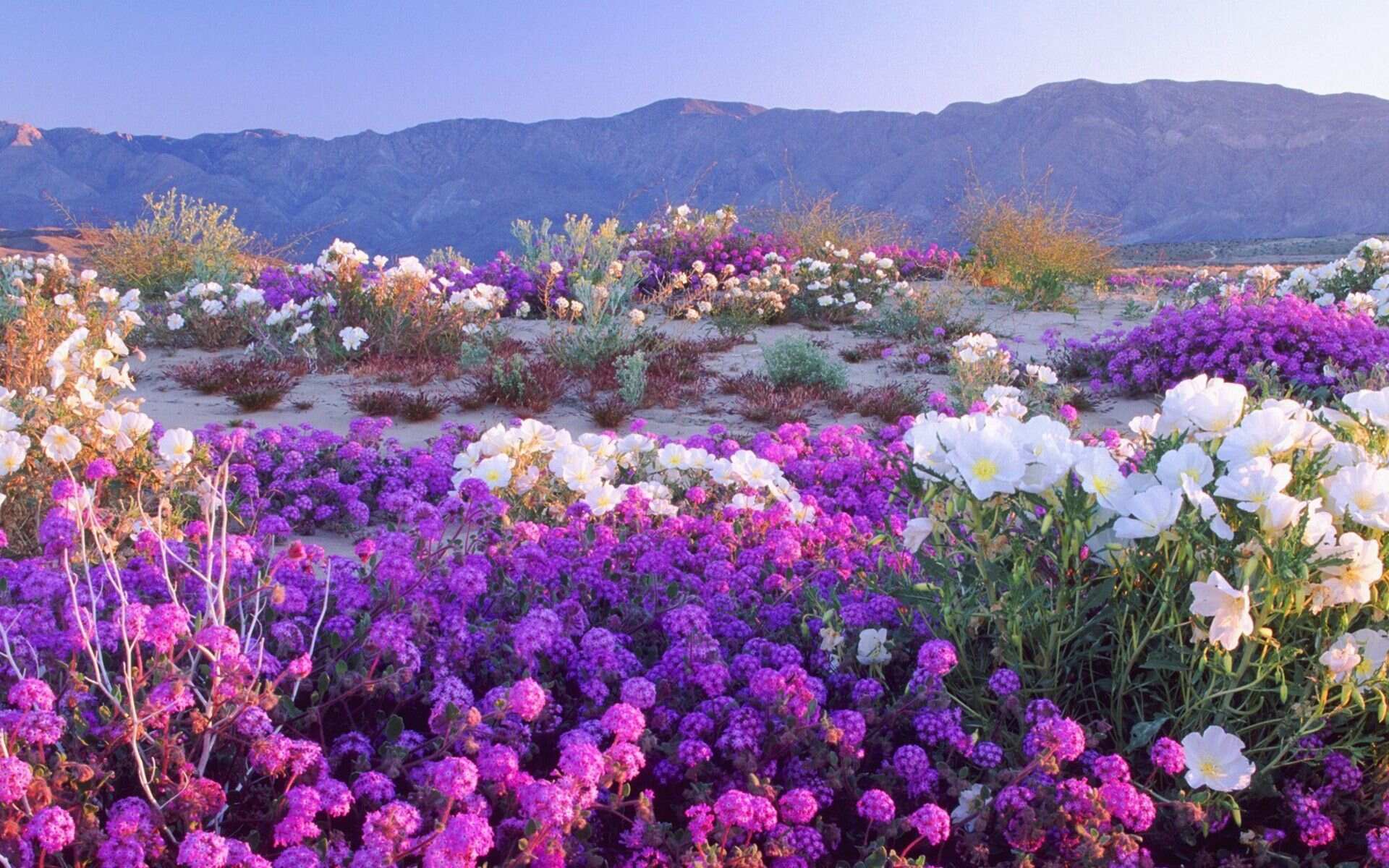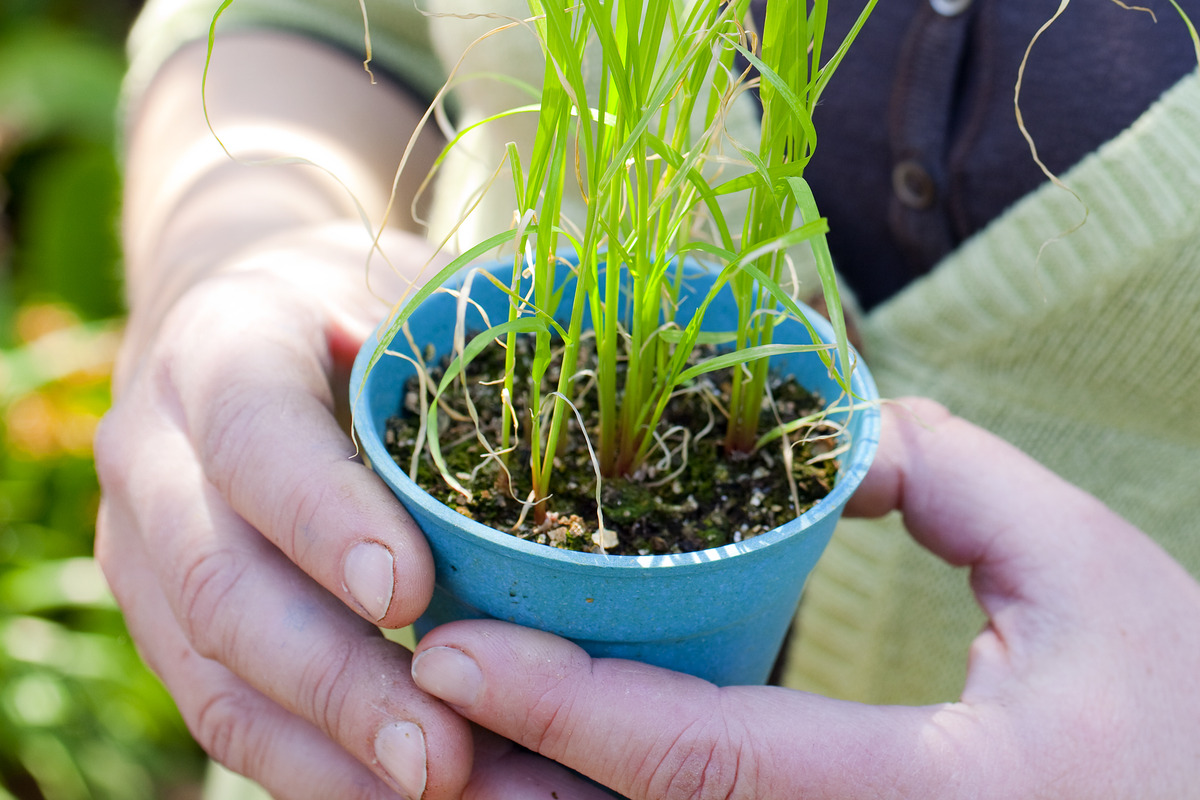Home>Gardening & Outdoor>Landscaping Ideas>How To Plant Wildflowers In Grass


Landscaping Ideas
How To Plant Wildflowers In Grass
Modified: May 6, 2024
Learn how to enhance your landscaping with wildflowers in grass. Discover expert tips and ideas for creating a vibrant and natural outdoor space.
(Many of the links in this article redirect to a specific reviewed product. Your purchase of these products through affiliate links helps to generate commission for Storables.com, at no extra cost. Learn more)
Introduction
Welcome to the world of wildflowers! If you’re looking to add a touch of natural beauty to your grassy landscape, planting wildflowers is a fantastic way to do so. Wildflowers not only bring vibrant colors and delightful fragrances to your outdoor space, but they also provide essential nourishment for pollinators, such as bees and butterflies. Whether you’re aiming to create a meadow-like expanse of wild blooms or simply want to intersperse some floral charm within your existing grassy area, this guide will walk you through the process of planting wildflowers in grass.
Embracing the wild side of nature and nurturing a biodiverse environment in your own backyard can be a truly rewarding experience. By following the steps outlined in this article, you’ll be well on your way to cultivating a flourishing habitat that celebrates the untamed allure of wildflowers.
Key Takeaways:
- Embrace the beauty of wildflowers in your grassy landscape to attract pollinators and create a biodiverse environment. Choose native species and prepare the soil for successful planting.
- Nurture your wildflowers by adjusting mowing practices, providing supplemental watering, and supporting local wildlife. Enjoy the ever-changing tapestry of colors and textures they bring to your landscape.
Read more: How To Plant A Desert Wildflower Garden
Choosing the Right Wildflowers
When it comes to selecting wildflowers for your grassy landscape, it’s essential to consider a few key factors to ensure the success of your planting endeavor. Here’s how to go about choosing the right wildflowers for your specific environment:
- Native Species: Opt for wildflowers that are native to your region. Native plants are well-adapted to the local climate, soil, and wildlife, making them more likely to thrive with minimal intervention.
- Diversity: Aim for a diverse mix of wildflowers to create a visually appealing and ecologically beneficial habitat. Look for a variety of colors, shapes, and bloom times to provide sustained interest and food sources for pollinators throughout the seasons.
- Soil and Light Conditions: Consider the specific soil type and light exposure in your planting area. Some wildflowers prefer well-drained soils, while others thrive in moist conditions. Similarly, certain species require full sun, while others can tolerate partial shade.
- Height and Growth Habits: Take into account the mature height and growth habits of the wildflowers. Taller species can add vertical dimension to your landscape, while sprawling or clumping varieties can create diverse textures and patterns.
- Wildflower Seed Mixes: To simplify the selection process, consider using pre-mixed wildflower seed blends that are tailored to specific regions or purposes, such as attracting butterflies or supporting pollinators.
By carefully considering these factors, you can choose a selection of wildflowers that will not only thrive in your grassy setting but also contribute to the overall beauty and ecological balance of your outdoor space.
Preparing the Soil
Before sowing your chosen wildflower seeds, it’s crucial to prepare the soil to create an optimal environment for germination and growth. Follow these steps to ensure that your wildflowers have the best possible start:
- Clearing the Area: Begin by clearing the planting area of any existing vegetation, such as grass, weeds, or debris. This can be done using a shovel, rake, or herbicide, depending on the size of the area and your preferred approach.
- Soil Testing: Consider conducting a soil test to assess the pH and nutrient levels of the soil. This information can guide you in making any necessary amendments to create a hospitable growing environment for the wildflowers.
- Loosening the Soil: Use a garden fork or tiller to loosen the top layer of soil. This helps improve aeration and drainage, creating a welcoming space for the wildflower seeds to take root.
- Adding Organic Matter: Incorporate organic matter, such as compost or well-rotted manure, into the soil to enhance its fertility and structure. This step can provide essential nutrients and support beneficial microbial activity in the soil.
- Leveling the Surface: Smooth and level the soil surface using a rake to create an even planting bed. This facilitates uniform seed distribution and promotes consistent moisture retention during the germination phase.
By diligently preparing the soil, you can set the stage for successful wildflower establishment and long-term vitality. The effort invested in this preparatory phase can significantly influence the overall health and resilience of your wildflower planting.
Mow the grass short, remove any debris, loosen the soil, and scatter the wildflower seeds. Lightly rake the area and water regularly until the wildflowers are established.
Planting the Wildflowers
With the soil primed and ready, it’s time to sow the seeds and bring your vision of a wildflower-adorned grassy landscape to life. Follow these steps to ensure a successful and gratifying planting process:
- Seed Distribution: Depending on the size of the planting area, decide whether you will sow the seeds by hand or use a seed spreader for more uniform coverage. Be mindful of the recommended seeding rates for the specific wildflower species or seed mix you’ve chosen.
- Even Coverage: Aim to distribute the seeds evenly across the prepared soil surface. This can be achieved by dividing the total seed quantity into smaller portions and sowing each section in a crisscross pattern to promote uniform distribution.
- Raking and Pressing: Gently rake the soil surface to lightly cover the seeds, ensuring that they are in good contact with the soil. Follow this by lightly pressing or rolling the area to improve seed-to-soil contact, which is essential for successful germination.
- Watering: After planting, thoroughly water the area to provide initial moisture for the seeds. Use a fine mist setting or a gentle spray to avoid displacing the seeds. Continue to keep the soil consistently moist during the germination period.
- Patience and Observation: Wildflowers may take some time to germinate and establish, so exercise patience and keep a watchful eye on the planting area. As the seeds sprout and the seedlings emerge, take note of any areas that may require additional attention or supplementary seeding.
By following these planting guidelines, you can lay the groundwork for a flourishing display of wildflowers within your grassy landscape. With proper care and attention, the seeds you’ve sown will soon evolve into a tapestry of natural beauty, attracting an array of pollinators and delighting all who encounter it.
Caring for Wildflowers in Grass
Once your wildflowers have taken root and begun to grace your grassy expanse with their enchanting presence, it’s important to provide them with the care they need to thrive and endure. Here are essential tips for nurturing your wildflowers within a grassy setting:
- Mowing Considerations: Adjust your mowing practices to accommodate the wildflowers. Raise the cutting height of your mower to allow the wildflowers to grow and bloom freely. Consider creating paths or designated areas where the grass can be left to grow longer, providing a charming contrast to the mown areas.
- Watering: While established wildflowers are generally resilient, supplemental watering during prolonged dry spells can support their vitality and promote continuous blooming. Be mindful of the water needs of both the wildflowers and the surrounding grass, aiming for balanced moisture levels.
- Weed Management: Keep an eye out for invasive weeds that may compete with the wildflowers for resources. Regularly inspect the planting area and promptly remove any encroaching weeds to prevent them from overshadowing or outcompeting the wildflowers.
- Observation and Appreciation: Take the time to observe the wildflowers as they evolve throughout the seasons. Appreciate the diversity of blooms, observe visiting pollinators, and embrace the ever-changing tapestry of colors and textures that the wildflowers contribute to your landscape.
- Supporting Wildlife: Embrace the ecological benefits of your wildflower meadow by welcoming and supporting local wildlife. Encourage the presence of pollinators by providing additional habitat elements such as native shrubs, a water source, or nesting sites.
By integrating these care practices into your routine landscape maintenance, you can foster a harmonious coexistence between the wildflowers and the surrounding grass, creating a dynamic and ecologically rich outdoor environment.
Read more: How To Plant Wildflower Seeds On A Slope
Conclusion
Congratulations on embarking on the journey of planting wildflowers in your grassy landscape! By incorporating the untamed beauty of wildflowers into your outdoor space, you’ve not only added visual allure but also contributed to the vitality of the local ecosystem. As your wildflowers bloom and flourish, they will attract a myriad of pollinators, infuse your surroundings with vibrant colors, and create a captivating natural tapestry.
Remember, the process of planting wildflowers in grass is not just about the end result; it’s about the experience and the ongoing connection with nature. As you tend to your wildflowers, take the time to immerse yourself in the sights, scents, and sounds of the natural world unfolding in your own backyard.
Whether you’ve created a sprawling meadow of native blooms or delicately woven wildflowers into your existing grassy landscape, your efforts in nurturing these wild wonders will yield rewards for both you and the environment. The dynamic interplay between the wildflowers and the grass creates a living canvas that evolves with the seasons, offering an ever-changing display of beauty and biodiversity.
As you continue to care for and appreciate the wildflowers in your grassy haven, take pride in the role you play in fostering a sustainable and enchanting habitat. Your dedication to supporting wildflowers contributes to the preservation of essential pollinator populations and the cultivation of a more biodiverse and resilient environment.
So, as you witness the enchanting dance of wildflowers amidst the grass, take a moment to revel in the simple yet profound joy that these natural wonders bring. Your decision to plant wildflowers in your grass is not just a horticultural endeavor; it’s a celebration of the captivating, unbridled spirit of the wild.
Ready to take your green thumb a step further? Check out our piece on sustainable landscaping. You'll learn how to make your outdoor spaces not only stunning but also eco-friendly. Whether you're a seasoned gardener or just starting out, these methods ensure your land works with nature, not against it. It's all about creating beautiful, thriving environments that need less water and fewer chemicals. So why not give your garden a makeover that's good for the planet too?
Frequently Asked Questions about How To Plant Wildflowers In Grass
Was this page helpful?
At Storables.com, we guarantee accurate and reliable information. Our content, validated by Expert Board Contributors, is crafted following stringent Editorial Policies. We're committed to providing you with well-researched, expert-backed insights for all your informational needs.















0 thoughts on “How To Plant Wildflowers In Grass”